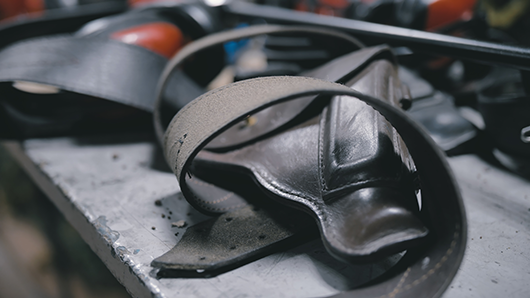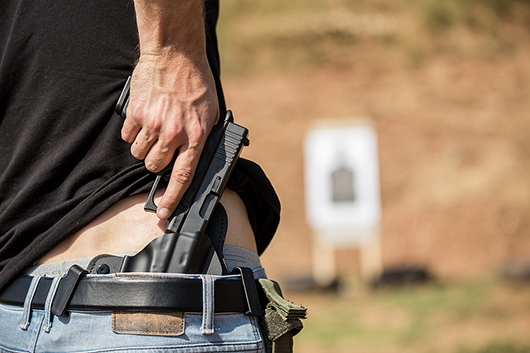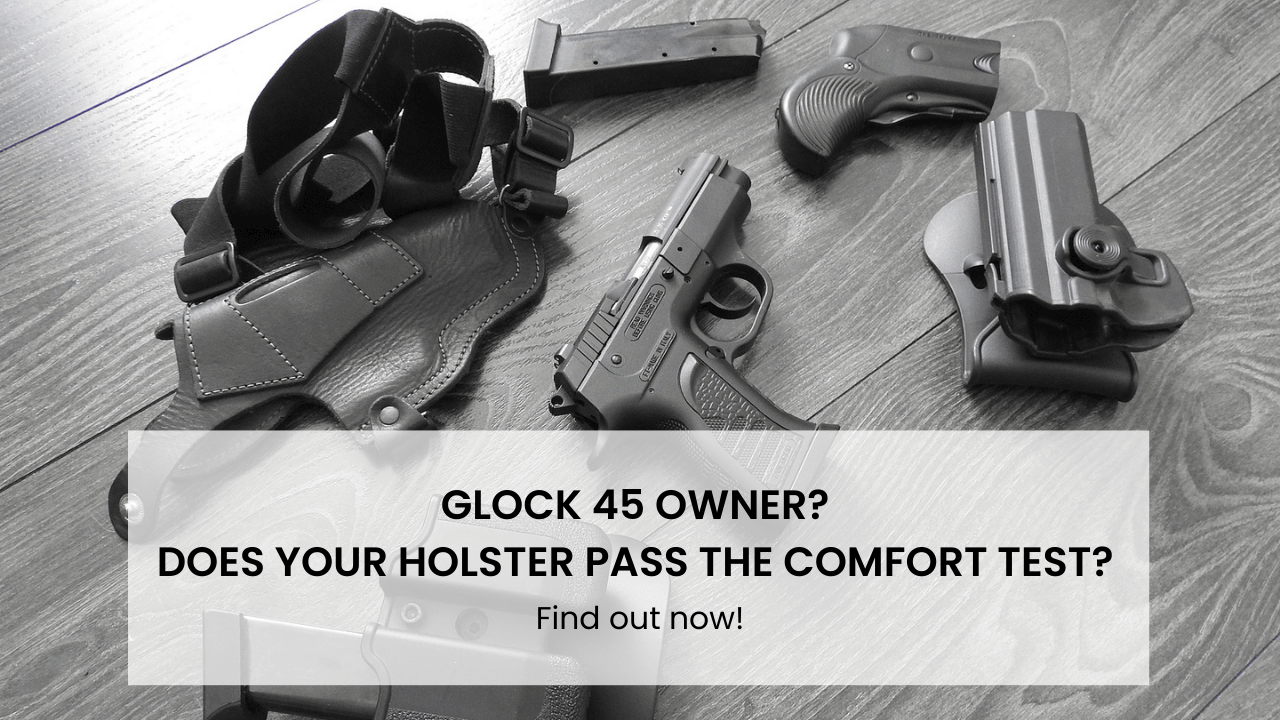Do I Need a Specific Type of Belt for Concealed Carry?
Mar 5th 2021

Experienced shooters and concealed carriers often insist on the importance of using a proper, sturdy gun belt, sometimes to the point of saying one should entirely avoid carrying a gun without one.
If you’re a newcomer, you may find the advice surprising; after all, why not just use your existing belts?
Learn what a gun belt is, what makes them different from regular dress belts, and why a good gun belt is essential for concealed carrying.
Why You Should Avoid Regular Belts

Carrying a firearm concealed is a serious responsibility requiring you to be very safe and aware of all relevant laws. Experienced concealed carriers are among the safest and most responsible people in the United States.
Two critical safety elements are firearm control and retention.
You must keep control of your gun at all times. When it’s not in your hands, your weapon must be tightly secured in your holster, and your holster must be where you expect it to be, with a tight, snug, and comfortable fit.
Using a robust, purpose-built gun belt is the only way to ensure proper gun and holster retention.
It doesn’t matter what kind of handgun you carry; whether it’s a subcompact pistol or a full-size revolver, even the smallest models are relatively heavy.
A typical concealed carrying handgun weighs between 20 and 30 ounces on average, without counting the weight of ammunition, spare magazines, holsters, or magazine carriers.
All these elements ride on your belt. If your belt isn’t sturdy enough to support the weight, it will sag, pulling your pants down, causing discomfort, and potentially causing other people to become aware that you’re carrying a firearm. In the worst-case scenario, your belt may even wear out or tear under the weight.
Regular belts simply aren’t designed to support a gun’s weight, let alone a complete everyday carry (EDC) kit. If you’re serious about concealed carrying, you need a proper gun belt.
What Makes a Gun Belt Different?
The primary difference between a regular dress belt and a purpose-built belt designed for carrying a gun is stiffness. You can test the difference by trying to roll it up. A proper gun belt should be stiff and give significant resistance, whereas a dress belt should roll up easily and without much effort.
Gun belts are stiffer because they are thicker and fit in larger belt loops, usually 1.5” or 1.75” wide. If you do not have pants that can accommodate this type of belt, you may need to adjust your wardrobe.
For example, a typical fashion belt may bear a label such as genuine leather or 100% leather. While it does guarantee that the product you’re looking at is leather, it does not inform you of the actual quality of the leather used, and most genuine leather belts employ the cheapest, lowest grade available.
In contrast, a quality leather gun belt employs what the leather industry calls full-grain leather. Full-grain means that the product in your hands uses the toughest part of the animal’s hide, possessing its full natural durability.
Some leather gun belts even possess additional reinforcing, such as a spring steel core, which increases your belt’s load-bearing capabilities and allows it to support even more weight. Other reinforcing methods include heavy-duty stitching and robust belt loops and buckles.
What About Belts Made of Nylon?
Besides leather, nylon is the second most common material for gun belts. Police and military tactical belts typically employ nylon in their construction.
Like with leather belts, not all nylon belts are created equal. Durability is paramount with nylon; an inadequate nylon belt will wear out prematurely or even tear under the weight of your EDC setup.
The Denier rating
Fortunately, there is a relatively straightforward way of checking whether a nylon belt is sufficiently robust for use as a gun belt: the Denier rating, which consists of a number followed by the letter D.
The Denier rating is a measurement unit of fiber density. The higher the Denier rating, the stronger and heavier the material is. A good nylon gun belt should have a minimum Denier rating of 600D, although you should have no trouble finding 1000D models or higher.
Belt buckles
Because they do not possess holes, nylon gun belts feature different buckle styles than leather belts. One of the most common buckle styles on nylon belts is the snap buckle, most commonly made of plastic.
Although they are familiar and easy to use (you may own backpacks that use this buckle style), plastic snap buckles are also the least durable and the most prone to failure under stress.
Friction buckles (also called military slides) are another typical belt buckle type, typically seen on surplus belts. They are lightweight, low-profile, and easy to use. The main advantage of a friction buckle is its virtually infinite adjustability. However, these buckles’ weak point is the friction bar, which can slip and compromise your belt’s secureness.
Quality tactical belts usually employ the cobra buckle, a specific type of quick-detachable metal buckle with an easy-to-use release system. Cobra buckles are among the best on the market, being fully adjustable and employing highly-durable aircraft-grade aluminum, featuring up to 5.5 tons of tensile strength.
Final Considerations
If you have the opportunity to test a belt before buying it, don’t hesitate to do so. Even if you find a gun belt made using the best materials on the planet, you won’t be able to put it to use if it’s uncomfortable.
Don’t forget to choose a gun belt style suitable for your environment. Nylon may be fine on the range, but if you carry concealed in an environment with a dress code, you may want something less tactical, such as leather.
Finding a gun belt that works for you may take some time and effort, but it is worth the investment.
Once you’ve found the right gun belt for you, don’t forget to get the best holsters for your concealed carry firearms. Incognito Concealment offers a large range of 100% US-made, hand-crafted Kydex holsters, providing the best fit and the most secure retention for your carry pieces.











